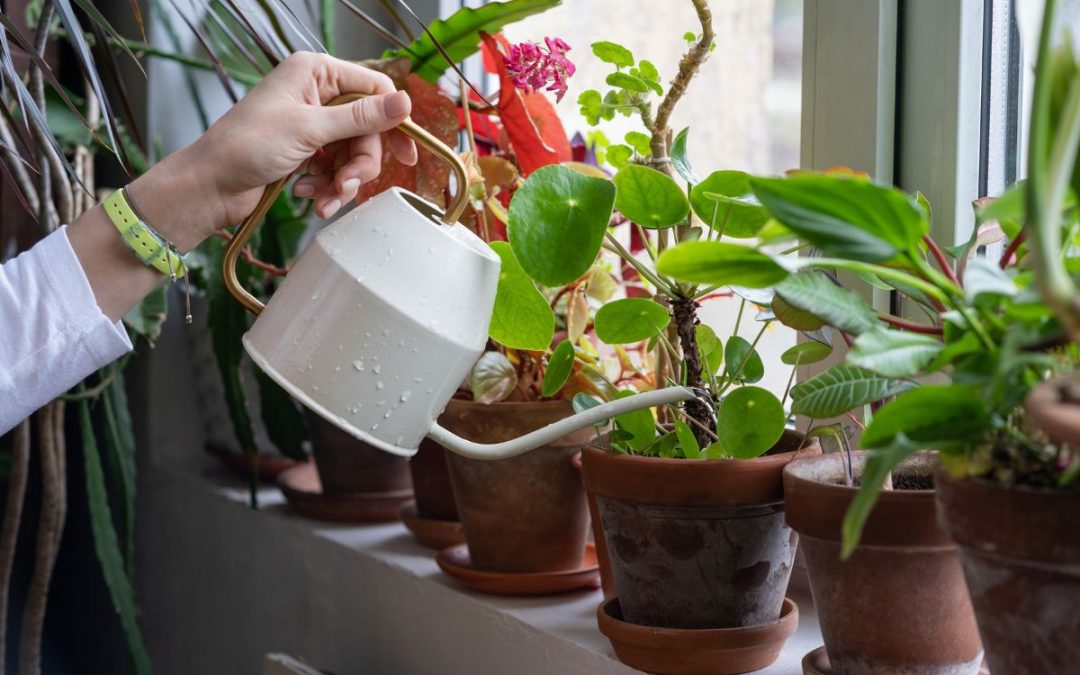Contents
- 1 How to Create the Perfect Watering Schedule for Indoor Plants
- 1.1 Why a Watering Schedule Matters
- 1.2 Step 1: Understand Your Plants’ Needs
- 1.3 Step 2: Check Soil Moisture Before Watering
- 1.4 Step 3: Match Watering to Environment
- 1.5 Step 4: Use the Right Tools for Consistency
- 1.6 Step 5: Create a Simple Routine
- 1.7 Step 6: Adjust Seasonally
- 1.8 Step 7: Watch for Warning Signs
- 1.9 Step 8: Combine Watering with Plant Care
- 1.10 FAQs About Watering Indoor Plants
- 1.11 Related Articles
- 1.12 Final Thoughts on Creating the Perfect Watering Schedule
How to Create the Perfect Watering Schedule for Indoor Plants
Struggling to keep your plants happy — not too dry, not drowning? You’re not alone. Overwatering and underwatering are the two biggest reasons indoor plants fail to thrive.
The good news? With a little planning (and the right tools), you can create a perfect watering schedule that keeps your houseplants lush, green, and growing beautifully year-round.
Why a Watering Schedule Matters
Every plant has different moisture needs. Succulents like dry spells, while tropical plants love consistent humidity. A proper watering schedule prevents:
Root rot from excess moisture
Wilting or crisp leaves from underwatering
Inconsistent growth from irregular watering habits
A good watering routine also helps you notice early signs of stress — like drooping leaves, yellowing, or fungus on the soil surface. Once you start tracking how often you water and how your plants respond, you’ll begin to recognize patterns unique to your home environment.
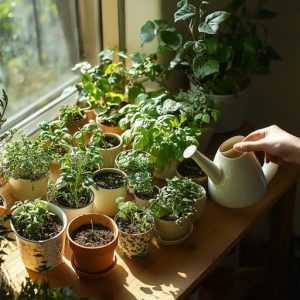
Step 1: Understand Your Plants’ Needs
Before setting any schedule, identify your plant types. Grouping them by moisture preference makes watering faster and more accurate.
| Plant Type | Watering Frequency | Notes |
|---|---|---|
| Succulents & Cacti | Every 2–3 weeks | Let soil dry completely between watering. |
| Tropical Plants (Monstera, Pothos) | Every 5–7 days | Keep soil slightly moist, not soggy. |
| Ferns & Calatheas | Every 3–5 days | High humidity; never let soil dry out. |
| Herbs (Basil, Mint) | Every 2–4 days | Prefer evenly moist soil with good drainage. |
For an easy way to monitor soil, try a Soil Moisture Meter — it tells you exactly when to water.
Soil Moisture Meter for Indoor Plants on Amazon – a simple tool that takes the guesswork out of watering.
Step 2: Check Soil Moisture Before Watering
Never assume — always check first. The top layer of soil can look dry while the deeper roots are still moist. That’s why consistency comes from observation.
Quick methods:
Use a moisture meter for accuracy.
Insert your finger two inches deep — if it feels dry, water.
Lift the pot: light = dry soil, heavy = still moist.
Watch plant cues: drooping leaves often signal thirst, while yellow leaves may mean too much water.
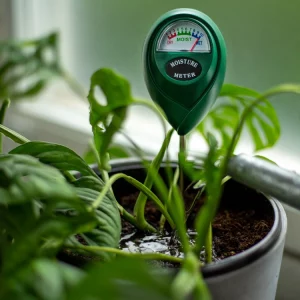
Step 3: Match Watering to Environment
Light, temperature, and humidity directly affect water evaporation.
Adjust your schedule if:
It’s hot or sunny → water more frequently.
It’s cool or humid → water less often.
Plants sit near radiators or air vents → soil dries faster.
Using grow lights → increases warmth and evaporation rate.
Consider grouping moisture-loving plants together so they share humidity. A small humidifier or pebble tray nearby can help balance dry air from heating systems.
A Digital Hygrometer can help track indoor humidity and temperature.
ThermoPro Digital Hygrometer on Amazon – ideal for keeping your plant room perfectly balanced.
Step 4: Use the Right Tools for Consistency
The tools you use can make or break your watering routine.
Recommended essentials:
Long-spout watering can – for precise watering without splashing leaves.
Self-watering planters – maintain consistent moisture for busy gardeners.
Drip trays – catch excess water and prevent soggy floors.
Spray bottle or mister – great for tropical plants and humidity boosts.
Indoor Long-Neck Watering Can on Amazon – perfect for reaching into dense foliage without spills.
Self-Watering Planters Set on Amazon – great for vacations or busy plant parents.
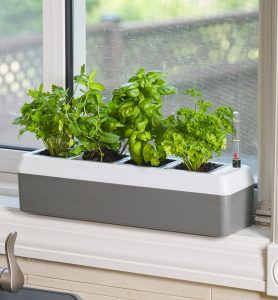
For even more consistency, consider smart watering systems that automatically release water based on soil dryness — ideal if you travel often.
Step 5: Create a Simple Routine
Building a routine keeps your plants consistently hydrated and healthy.
Example Weekly Watering Plan:
Monday: Check soil moisture with a meter.
Wednesday: Mist tropical plants or refill self-watering pots.
Friday: Deep water plants that dry quickly.
Sunday: Inspect leaves, clean dust, and adjust humidity levels.
Pro tip: Write this in a small notebook or set recurring reminders on your phone. If you’re managing 10+ plants, labeling each pot with its last watered date can save you guesswork later.
Step 6: Adjust Seasonally
Plants grow slower during fall and winter due to reduced sunlight, meaning they drink less. If you keep the same summer watering schedule, root rot can sneak up fast.
Seasonal adjustments:
Reduce watering frequency by 30–40% in cooler months.
Water early in the day to let excess moisture evaporate.
Resume normal schedule once daylight hours increase.
For extra help in dry homes, use a mini humidifier to prevent leaf crisping.
LEVOIT Smart Humidifier on Amazon – balances air moisture for happier tropical plants.

Step 7: Watch for Warning Signs
Even with a great schedule, you must keep an eye out for trouble.
Overwatering signs:
Yellow or translucent leaves
Mushy stems
Mold or fungus on soil
Underwatering signs:
Crispy edges or drooping leaves
Soil pulling away from pot edges
Stunted new growth
If you notice persistent problems, inspect the pot’s drainage holes and ensure your soil mix matches the plant type. For fungal issues, see Prevent Mold and Fungus in Indoor Soil.
Step 8: Combine Watering with Plant Care
Watering time is perfect for other quick tasks:
Wipe dust off leaves with a damp cloth (boosts photosynthesis)
Rotate pots for even light exposure
Prune any yellow or dead leaves
Check for pests hiding under leaves
These little habits make your watering sessions double as complete plant maintenance routines — helping your collection look vibrant and well-tended.
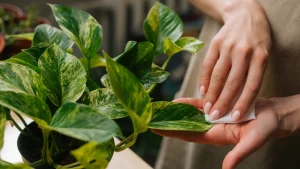
FAQs About Watering Indoor Plants
1. Should I water on a fixed day every week?
Not always — it’s better to water based on soil dryness than on a strict calendar.
2. Can tap water harm indoor plants?
Yes, certain species like Calatheas and Peace Lilies dislike hard tap water. Use filtered or rainwater if possible.
3. How much water should I use each time?
Water until it flows lightly from the drainage holes. Empty trays after 10–15 minutes to prevent soggy roots.
4. Should I mist plants daily?
Not all plants need misting — only those that prefer humidity, like ferns and orchids.
Related Articles
Final Thoughts on Creating the Perfect Watering Schedule
A good watering routine turns guesswork into confidence. With a few smart tools and consistent checks, you can maintain ideal moisture levels, prevent root rot, and keep every leaf vibrant year-round.
The secret isn’t perfection — it’s observation. Once you learn your plants’ rhythm, watering becomes second nature.

